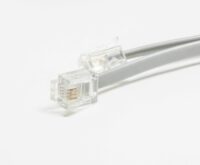The Unblinking Eye: How We Rely on Satellites for Climate Change Truth
How do we know the planet is warming? It’s a simple question with a profoundly complex answer. We don’t just *feel* it in the increasingly common heatwaves or see it in the news reports of distant wildfires. We know it because we measure it. We measure it relentlessly, globally, and with staggering precision. But who, or what, is doing all this measuring? While dedicated scientists on the ground are essential, much of the credit goes to the unsung heroes of climate science: a fleet of sophisticated satellites orbiting hundreds of miles above our heads. The role of satellites in monitoring climate change isn’t just helpful; it’s absolutely fundamental to our understanding of the planet’s health.
Think of it this way. Trying to understand global climate by only using ground-based weather stations is like trying to understand an entire ocean by dipping a single bucket into the water at the beach. You get a tiny, localized snapshot. Satellites, on the other hand, give us the whole picture. They provide a continuous, comprehensive, and unbiased view of our world, from the deepest oceans to the highest layers of the atmosphere. They are our planetary doctors, constantly taking Earth’s vital signs.
Key Takeaways
- Global Perspective: Satellites provide a complete and continuous view of the entire planet, overcoming the limitations of ground-based monitoring.
- Precise Measurements: They use advanced sensors to track critical climate variables like sea-level rise, ice melt, greenhouse gas concentrations, and global temperatures with incredible accuracy.
- Data for Models: The vast amounts of data collected by satellites are essential for building and refining the climate models that predict future changes.
- Informing Policy: This objective data is crucial for international agreements, verifying commitments, and guiding effective climate action policies.
Why We Need a View from Orbit
Before the satellite era, our climate records were a patchwork. We had data from ships, weather balloons, and ground stations, but these were concentrated in populated areas of the Northern Hemisphere. Huge swaths of the planet—the vast oceans, the remote polar regions, dense rainforests—were effectively data deserts. This made it incredibly difficult to spot global trends. Was a warm year in Europe just a regional fluke, or part of a worldwide pattern? It was hard to say for sure.
Satellites changed everything. Beginning with missions in the 1960s and 70s, we started getting a god’s-eye view. Suddenly, we could see the full extent of Arctic sea ice and watch it shrink year after year. We could measure the temperature of the entire surface of the ocean, not just the spots where ships happened to travel. This ability to collect data from the same instrument, over the entire globe, day after day, year after year, is the bedrock of modern climate science. It allows us to filter out the noise of local weather and see the clear, undeniable signal of long-term climate change.

The Tools of the Trade: A Look at Climate-Watching Satellites
Not all satellites are created equal. Different missions are designed with specialized instruments to measure specific aspects of the Earth system. It’s like a team of specialists, each focused on a different planetary vital sign.
Measuring Our Warming Atmosphere
One of the most critical jobs for climate satellites is tracking the very gases that are driving warming. Missions like NASA’s Orbiting Carbon Observatory 2 (OCO-2) and its successor OCO-3 (which is cleverly mounted on the International Space Station) are designed to do one thing with exquisite precision: measure the concentration of carbon dioxide in the atmosphere. They can map CO2 sources and sinks across the globe, showing us not just that CO2 is increasing, but *where* it’s coming from and *where* it’s being absorbed by forests and oceans. This is vital for understanding the carbon cycle. Others, like the Atmospheric Infrared Sounder (AIRS) on the Aqua satellite, create 3D maps of atmospheric temperature and water vapor, providing a daily global weather report that, over time, reveals the long-term warming trend.
The Cryosphere in Crisis: Watching Ice Melt
The Earth’s frozen regions, known as the cryosphere, are like the canaries in the coal mine for climate change. They are incredibly sensitive to small changes in temperature, and what happens there has global consequences, especially for sea-level rise. Monitoring these remote, harsh environments is nearly impossible from the ground. This is where satellites shine.
- Ice Sheets: Satellites like NASA’s ICESat-2 use a laser altimeter—it’s essentially a super-advanced ruler using light—to measure the height of the ice sheets in Greenland and Antarctica. By comparing measurements over time, scientists can calculate how much ice is being lost with stunning accuracy. We’re talking about billions of tons per year.
- Sea Ice: Other satellites use passive microwave sensors to see through the clouds and polar darkness, mapping the extent of floating sea ice in the Arctic and Antarctic. Thanks to an uninterrupted record stretching back to 1979, we have an undeniable visual record of the dramatic decline of summer Arctic sea ice.
- Glaciers: High-resolution imagers on satellites like Landsat and Sentinel-2 allow us to track the retreat of thousands of individual glaciers all around the world, from the Himalayas to the Andes.

Tracking the Rising Tides
For the hundreds of millions of people living in coastal communities, few climate impacts are more immediate than sea-level rise. For decades, a series of international satellite missions, such as the TOPEX/Poseidon and the Jason series, have been using radar altimetry to measure the height of the ocean surface. They bounce a radar pulse off the sea surface and precisely time how long it takes to return. This allows them to measure sea level down to the millimeter. This continuous, high-precision record shows that the rate of sea-level rise isn’t just steady; it’s accelerating.
“What satellites provide is the large-scale, unambiguous evidence. You can’t argue with a global dataset that shows the same trend year after year. It moves the conversation from ‘Is this happening?’ to ‘What are we going to do about it?'”
How Satellites Monitoring Climate Change Informs Policy and Action
This torrent of data isn’t just for academic papers. It has real-world consequences, forming the scientific backbone for critical policy decisions and international climate negotiations. The insights gained from satellites monitoring climate change are what empower governments and organizations to act.
The Data That Drives the Models
How do scientists predict what the climate might look like in 2050 or 2100? They use complex computer simulations called climate models. These models are only as good as the data you feed them. Satellite observations—on ocean temperature, cloud cover, ice extent, atmospheric composition—are the ‘real world’ inputs that make these models realistic. By testing models against decades of past satellite data, scientists can verify their accuracy and build confidence in their future projections. This is crucial for planning infrastructure, managing water resources, and preparing for the impacts to come.
Verifying International Agreements
When countries make pledges under agreements like the Paris Accord to reduce their greenhouse gas emissions, how do we know if they’re following through? While self-reporting is part of the process, satellites provide a powerful, independent tool for verification. As technology improves, we are getting closer to being able to precisely measure emissions from specific countries, regions, and even individual large power plants from space. This capability for ‘eyes in the sky’ verification adds a crucial layer of transparency and accountability to global climate efforts.
The Future of Earth Observation
As crucial as they are now, the role of satellites is only set to grow. We’re entering a new golden age of Earth observation, driven by technological innovation and an urgent need for more detailed information.
Next-Generation Technology
Upcoming satellite missions promise even greater capabilities. We’re seeing the development of instruments with higher resolution, allowing us to see climate processes in finer detail. New types of sensors will help us measure things we couldn’t before, like the depth of snowpack or the health of forests on a global scale. Furthermore, the explosion of commercial satellite constellations and the application of Artificial Intelligence (AI) and machine learning are revolutionizing how we process the petabytes of data streaming down from orbit every day. AI can help scientists identify patterns and signals in the data that a human might miss, accelerating the pace of discovery.

The Challenges Ahead
Of course, it’s not without its challenges. These satellite missions are incredibly complex and expensive, requiring long-term funding commitments and international collaboration. Ensuring data continuity—replacing aging satellites before they fail so we don’t have gaps in our long-term records—is a constant concern for space agencies like NASA and ESA (the European Space Agency). Open data policies, which make this information freely available to scientists and the public around the world, are also essential to maximizing their value.
Conclusion
When you look up at the night sky, you might see a faint, moving star. It could be one of the dozens of sentinels silently circling our planet, taking its pulse. They are our objective, tireless observers, providing the undeniable evidence of a world in transformation. The data they collect is not political; it is simply a reflection of the physical reality of our planet’s systems. Satellites don’t have an agenda. They just measure. And what they have measured over the last half-century tells a clear and urgent story. Understanding their role is understanding the very foundation of how we know what we know about climate change, and they will be our most essential guides as we navigate the challenges of the future.
FAQ
How accurate is satellite data for climate change?
It’s incredibly accurate. Scientists and engineers spend years calibrating the instruments on satellites before and after launch. They cross-validate the data with ground-based measurements to ensure its precision. For example, satellite measurements of sea level rise are accurate to within a few millimeters. This high level of accuracy is what makes the data so reliable for detecting the small but persistent trends associated with climate change.
Can one country block another from accessing this climate data?
For the most part, no. Major space agencies like NASA and the European Union’s Copernicus program have long-standing policies of making their Earth observation data freely and openly available to anyone in the world. This spirit of international scientific collaboration is a cornerstone of climate research and ensures that scientists, regardless of their nationality, have access to the best available information to study our shared planet.
Do satellites only measure negative changes?
Not at all! While they are critical for tracking concerning trends like deforestation and ice melt, satellites are also powerful tools for monitoring positive environmental action. They can be used to verify the success of reforestation projects, monitor the health of protected marine areas, track improvements in air quality resulting from new regulations, and measure the adoption of renewable energy sources like large-scale solar farms. They provide crucial feedback on whether our solutions are working.



 The Ethics of AI Content: Bias, Truth, and Ownership
The Ethics of AI Content: Bias, Truth, and Ownership  Serverless Architecture: The Ultimate Guide for Developers
Serverless Architecture: The Ultimate Guide for Developers  AI Translating Ancient Texts: A Digital Rosetta Stone
AI Translating Ancient Texts: A Digital Rosetta Stone  Improving Mental Health Diagnostics with Technology
Improving Mental Health Diagnostics with Technology  How Tech Creates More Inclusive Banking for All
How Tech Creates More Inclusive Banking for All  Beyond Passwords: The Future of Authentication Is Here
Beyond Passwords: The Future of Authentication Is Here  Backtest Crypto Trading Strategies: A Complete Guide
Backtest Crypto Trading Strategies: A Complete Guide  NFT Standards: A Cross-Chain Guide for Creators & Collectors
NFT Standards: A Cross-Chain Guide for Creators & Collectors  Decentralized Storage: IPFS & Arweave Explained Simply
Decentralized Storage: IPFS & Arweave Explained Simply  How to Calculate Cryptocurrency Taxes: A Simple Guide
How to Calculate Cryptocurrency Taxes: A Simple Guide  Your Guide to Music NFTs & Top Platforms for 2024
Your Guide to Music NFTs & Top Platforms for 2024  TradingView for Crypto: The Ultimate Trader’s Guide
TradingView for Crypto: The Ultimate Trader’s Guide